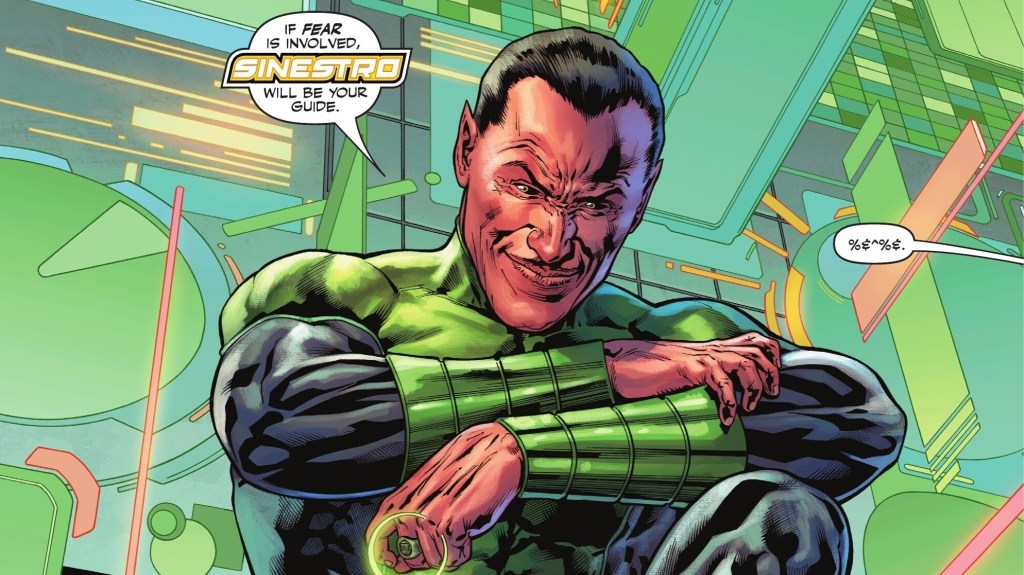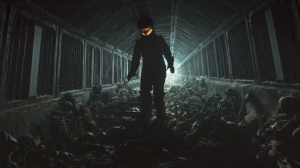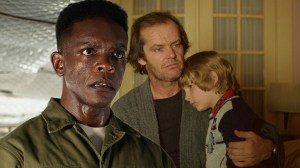Ryan Reynolds’ 2011 film, Green Lantern, is widely regarded as one of the worst DC movies ever produced, but it still handled one of its most important characters better than the comics. For all of the poor decisions behind that notorious flop, Warner Bros’ creative team knew that Sinestro (played by Mark Strong) is better as a villain than as a hero. DC Comics, on the other hand, persists, despite the evidence.
Videos by ComicBook.com
Sinestro was initially introduced as a corrupted Green Lantern who created his own corps diametrically opposed to the Green Lantern Corps. His Sinestro Corps is fueled not by willpower, but by fear, and its purpose is not to protect the innocent but to acquire power. DC has tried on multiple occasions to twist Sinestro into an anti-villain with a legitimate point about the nature and benefit of order and tyranny. The writers have also attempted, on numerous occasions, to give Sinestro a redemption arc. Currently, Sinestro has rejoined the Green Lantern Corps and is presented as a man who is looking to reform. Plainly, this direction is a big mistake, because Sinestro is best when he’s unapologetically evil.
DC Needs to Stop Trying to Redeem Sinestro

DC has tried to give Sinestro a redemption arc several times, with his most recent being the laziest attempt of them all. After the villain Lord Premier Thaaros destroyed the Yellow Lantern Battery that fuels the Yellow Power rings, Sinestro was left powerless. Sinestro’s rage over his loss led him to acquire a Red Lantern ring, which he used to help the Green Lantern Corps defeat Thaaros. After the battle was won, Sinestro curiously and perhaps cynically was given a Green Lantern ring under the premise that it would keep the Red Lantern’s rage-inducing effects in check.
Now, Sinestro seems to have been welcomed back into the Green Lantern Corps with open arms and is acting like a selfless hero again. Sinestro’s sudden change of heart and willingness to accept a Green Lantern ring came entirely out of nowhere. We never even see him receive the ring; he simply has it at the beginning of Green Lantern Corps #1. Without even as much as a trial, Sinestro seems to have just been given a pass for his countless crimes, including multiple genocides.
Moreover, Sinestro’s redemption by the Green Lantern Corps merely because he was forced by impotence and rage to help them defeat a common enemy seems to be a betrayal of the basic premise of the Green Lantern Corps, whose members are chosen because of their intentional willingness to do good. In contrast, Sinestro’s intention was only to help himself out of powerlessness and to succeed through rage. This should not be the reason to be given the power of a Green Lantern ring.
This wasn’t the only time that DC has tried to redeem Sinestro. During the New 52 reboot of DC Comics, the Guardians of the Universe tried to undermine the Sinestro Corps by giving Sinestro a Green Lantern ring and putting him on a path towards redemption. This plan worked – for a while. Sinestro even fought against his own Corps before eventually returning to villainy. The Corps’ efforts to use its Green Lantern Ring as a reward for Sinestro to betray the evil Corps that he started seem to have been both opportunistic and naïve.
Naïve because the Guardians of the Universe appear to have forgotten that Sinestro originally was a Green Lantern and used its power to take over his planet and rule it as a dictator. His wearing a Green Lantern ring once again doesn’t prove that this serial betrayer is a changed man or won’t betray again. Moreover, the Guardians’ action ignores the depth of Sinestro’s villainy. He is responsible for the deaths of thousands of Green Lanterns and countless innocent civilians in his quest for universal domination. The idea that such a monster could just be allowed to roam free because of a uniform change is baffling.
The truth is, though, that Sinestro is bad to the bone and is a much more compelling and threatening villain when they don’t try to give him redeemable qualities.
Sinestro Never Cared About Order, He Only Cares About Power

Sinestro is one of the greatest threats in the universe. Still, DC writers continue to try to create moral complexity and a possible redemption arc that doesn’t align with his actions. Over the years, DC has made various attempts to portray Sinestro as a more noble supervillain whose basic aims are for a kind of good but come with some very bad acts – somewhat akin to tyrants like Black Adam and Doctor Doom.
In Sinestro’s case, DC has tried to present him as a man whose obsession with bringing order to a chaotic universe has led him to adopt a fascist ideology. The writers like to claim that Sinestro truly believes that the universe would be better if it were ruled through fear. During his original tenure as a Green Lantern, Sinestro was depicted as exhibiting the same ideology as anti-heroes like the Punisher, who kill criminals without due process. Sinestro even formed his own Corps with the intention of replacing the Green Lanterns and becoming the new protectors of the universe, with himself as its leader. However, this philosophy of “order through fear” is inherently corrupting and evil and his actions paint the very menacing reality of such an approach of total power and total control.
When making a Corps that would supposedly bring order to a chaotic universe, Sinestro picked the absolute worst candidates to become his followers. He searched across the universe for people who could instill great fear and who would embrace the power derived by the emotion of fear of Sinestro’s Yellow Lantern rings. As one can expect, this method didn’t recruit people who wanted to fight for justice. Instead, the rings flew to terrorists, serial killers, anarchists, and literal monsters. Where once Sinestro claimed that criminals deserved no redemption, now he freely gave near infinite power to the most vile and wicked individuals in the universe.
Even genocidal maniacs like the Anti-Monitor and Superboy Prime, who seek universal destruction, were recruited into the Sinestro Corps. The writers try to justify Sinestro’s reasons for letting such violent lunatics enter his “peacekeeping” Corps by having recruits undergo extreme reconditioning and torture until they become willing servants of Sinestro’s cause. But dispensing evil does not erase evil; it only enhances evil. This violent reconditioning may make many of his Corps’ members more compliant to Sinestro’s will, but it does not change who they are or the evil that they do, like the serial killer Romat Ru, who gleefully admits to still murdering children. None of what Sinestro does is a foundation for a Corps to instill order; it’s one made to create a prison of the universe through chaos and destruction for the sake of one man’s ego.
As far back as his original appearance, Sinestro shows that he doesn’t really care about the welfare of his people, only his own position of power. After he took over his homeworld of Korugar, he had his terrified citizens praise him like a god. Even when they came to him seeking aid from serious threats, Sinestro only acted when he felt it was worth his time. And with the creation of the Sinestro Corps, he acted like a cult leader with his followers praising his every word. He adorned himself with all manner of lavish items and women, while claiming to have moral superiority over the rest of the universe.
The Sinestro Corps has committed countless atrocities in Sinestro’s name and has done very little to instill any actual peace in the universe. Sinestro certainly has recognized the effect of allowing psychopathic killers and monsters into his Corps. Therefore, his actions and those whom he recruits into the Sinestro Corps all reveal his fundamentally corrupt nature and his evil philosophy. After all, the idea of order above all else is the excuse of all totalitarian regimes. By trying to portray Sinestro as both a hero and an anti-villain, the story gives the lie to such evil organizations, and it detracts from an incredibly relevant and important warning about the nature of tyranny.
No matter how much dictators claim about instilling order, all they really care about is preserving their own power and status. In short, Sinestro is authentically bad, and he should be recognized and portrayed as such.
What do you think? Leave a Comment below and join the conversation in the ComicBook Forum!









